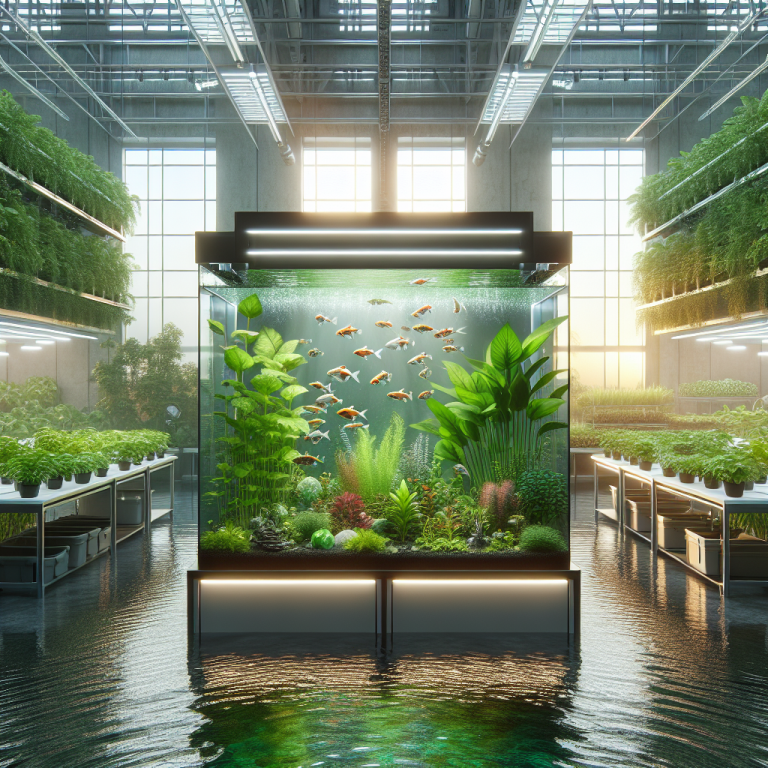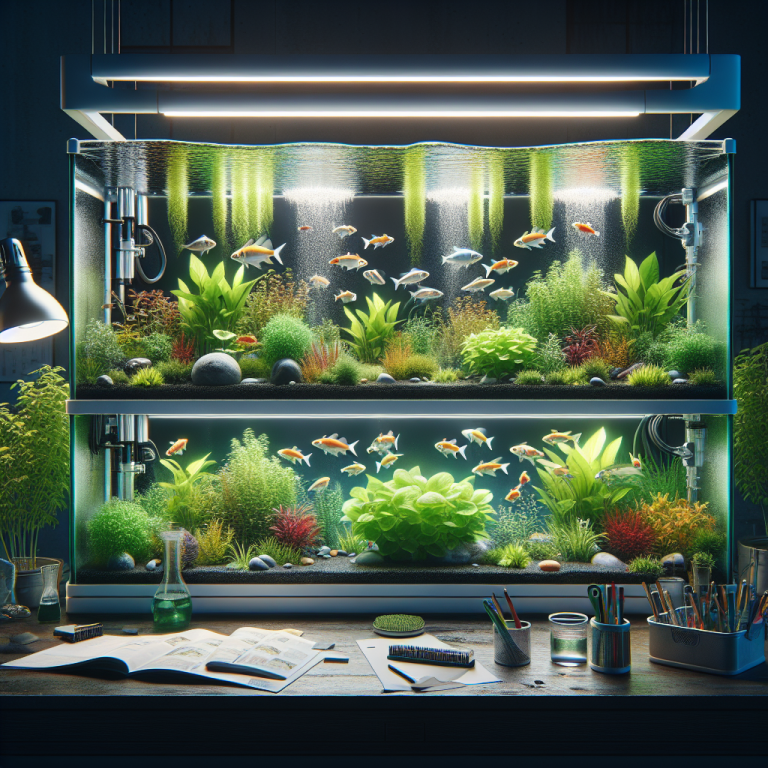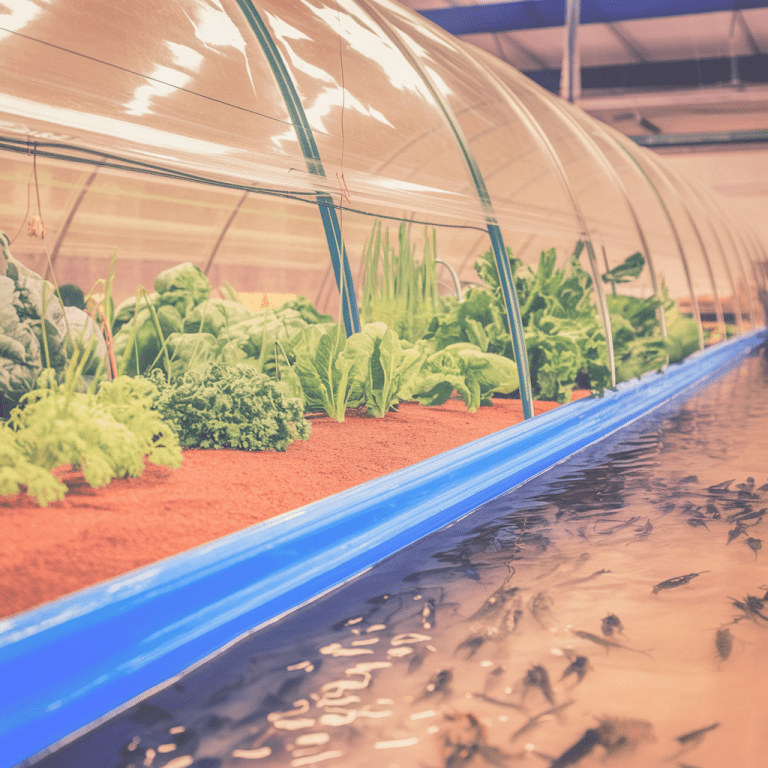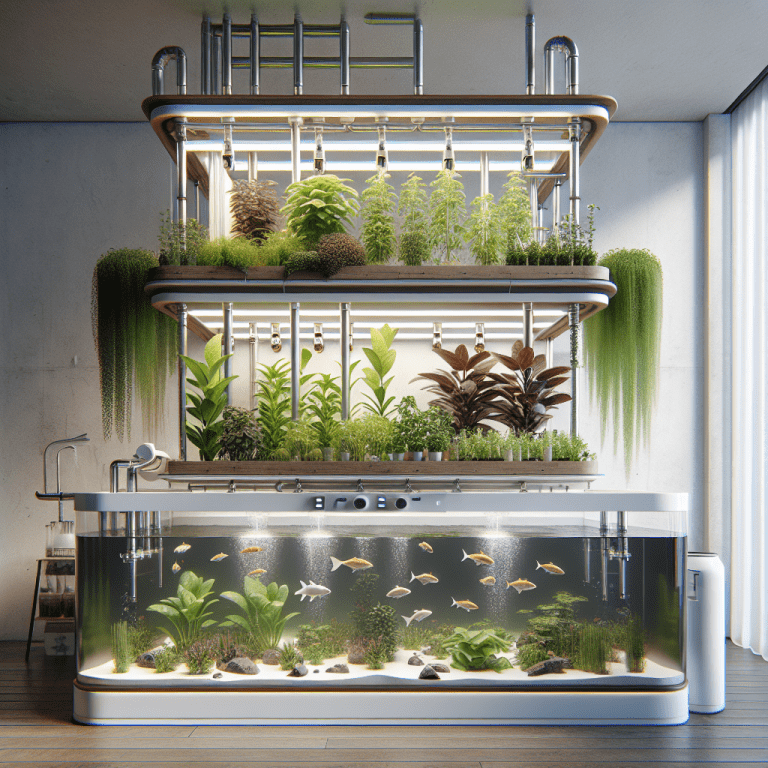Ever wondered how you could create your own self-sustaining garden, but felt stumped by how complex it seems? Maybe you've heard of aquaponics – an innovative and highly efficient system merging the best of aquaculture and hydroponics. Yet, diving into aquaponics nutrient management can feel like learning a whole new language.
That's where we got your back – consider this your Rosetta Stone for aquaponics nutrient management. Forget about wading through complex jargon and intimidating tutorials. This beginner's guide breaks it down piece by piece to support you on your green-thumbed venture.
Using this guide, we'll embark on an enlightening exploration of plant nutrition within these unique cultivation systems, and uncover the optimal nutrient balance for the healthiest, happiest plants. We'll tackle the challenge of managing the pH levels in your system, a key element often causing newbies some serious headaches.
Stumbling upon nutrient deficiencies? Together, we'll zero in on common culprits and swiftly steer you back on track. To conclude our journey, we'll dive into proactive and imaginative strategies for maintaining a sustainable and efficient garden – all in a way that speaks to your need for creativity and innovation.
Relax! Strap on your explorer's cap, leave the overwhelm at the door, and let’s embark on this refreshing voyage through the vibrant world of aquaponics nutrient management. Excited much? Yeah, us too! Let’s grow together, shall we?
Understanding Aquaponics Nutrient Management: A Beginner’s Guide
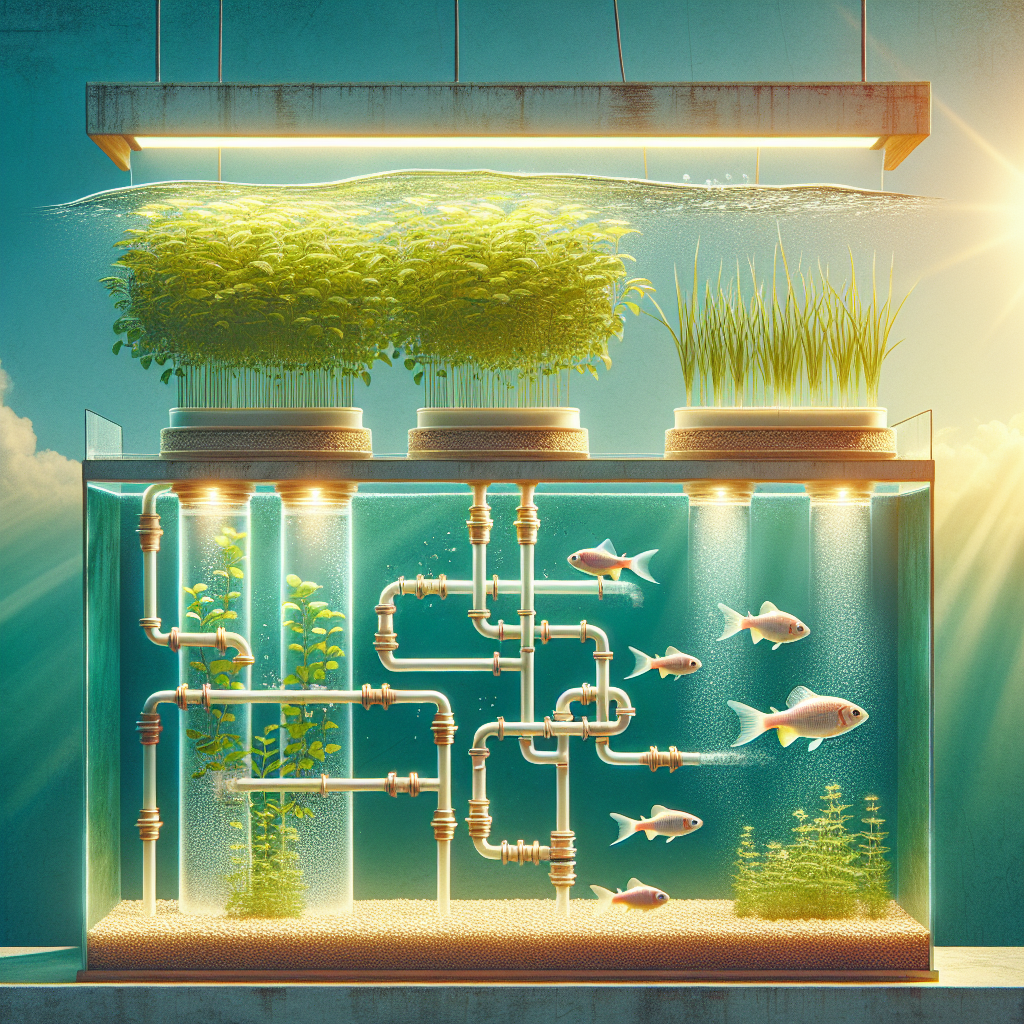
Decoding the Aquaponics Nutrient Management Maze
Imagine yourself preparing a lavish multicourse, banquet-style dinner. Now wouldn't it be odd to treat all your dishes to the same seasoning? After all, a dessert sprinkled with black pepper won't quite hit the spot, right? Such is the case with Aquaponics Nutrient Management – an art of customizing the nutrition profile in an aquaponic system to ensure plants flourish and bear good yield.
Think of your aquaponics system as a gourmet salad – with its various components like fish, bacteria, and plants. Each ingredient has unique nutrient needs. The same "seasoning" selection won't nourish all your system components alike—just like a spring of basil on chocolate mousse won't do much for your gastronomic experience.
Now, aquaponics nutrient management might resemble a tightrope walk for freshers, but let's take this adventurous journey together.
The process primarily revolves around synthesizing valuable plant husbandry wisdom with foundation aquatic science knowledge. Here, your vibrant fish produce waste or "nutritious compost" for your plants' benefit. However, mesmerizing this cycle sounds, it doesn't supply all plant nutrients—kind of like an all-you-can-eat buffet missing dessert!
That's when our nutrient hierarchy earns its fame. Commonly unfolding in three prime stages: primary macronutrients (think Nitrogen, Phosphorous, Potassium- the "steak" if you will of the nutrient meal), secondary macronutrients (like meat sides), and micronutrients, our enchanting sides completing this amazing nutrient feast.
Remember, diving deep into this aquaponics nutrient management pond may seem intimidating first. However, most solid things in life sprout from pitfalls. Harness your inner creativity, be magnificent fungi reverse engineering a rotten stump into nutrient-rich soil. Let us embark on this bewitching nutrient management experience, producing healthy and organic home produce together!
Basics of Plant Nutrition in Aquaponics Systems
Every plant enthusiast knows the thrill of seeing that first sprout poke through the soil. Now, imagine that excitement mixed with the satisfaction of self-sustainability through an aquaponics system! But, to see that tiny seed become a flourishing entity, you'll need to understand the basics of plant nutrition in aquaponics. This is the heart of your aquaponics nutrient management strategy.
Now, let's break this down, shall we?
First off, plants derive essential nutrients from water and soil during traditional farming, right? But with an aquaponics system, there’s no soil. So, here natural waste from fish or other aquatic animals in the system becomes the nutrient superstar. These natural waste materials, rich with essential elements like Nitrogen, help sustain plant growth and development. What a nifty way to re-purpose the fish poop, eh?
Just think of it as an elegant waltz of fish, water, and plants. The fish produce waste, the microorganisms in the system process the waste into nutrients, the plants consume these nutrients and, in turn, purify the water for our finned friends. Although may sound technical, it's mostly nature's magic at work here!
Granted, this might seem daunting as a beginner, but once you see your lush, green plants thriving in your very own aquaponics system, it’ll be rewarding beyond words. Trust me, aquaponics nutrient management isn’t as tricky as it sounds. It's your beautiful, natural-based solution to sustainable planting.
Just remember, every plant requires a special mixture of elements. Similar to how you'd crave a hot chocolate on a snowy afternoon while preferring a chilled lemonade on a sunny day!
So, ready to turn your brown thumb green using aquaponics nutrient management? You're about to be the most popular (and sustainable) Jack in the beanstalk tale of your neighborhood!
Optimizing Nutrient Balance for Healthy Plant Growth
Ever felt overwhelmed trying to decipher the foreign language of nutrient balance in aquaponics? Trust me, we've all been there. But guess what? Finding the perfect balance of nutrients is kind of like mixing an awesome playlist for a road trip. You need a bit of everything!
In the context of aquaponics nutrient management, the playlist includes crucial elements: nitrogen (think hit song), phosphorous (the lively rhythm), and potassium (that melodious bass). These macronutrients set the stage for a successful crop growth. Imagine NH3 (ammonia) screaming to your plants, “let's grow!” while NO3 (nitrate) hums a soothing tune of sustainability and protection.
But the real magic? The veggies and fish jamming together in perfect harmony, each nourishing the other in this innovative aquaponics rhythm.
Now, we're no band managers but understanding when a nutrient concert might be off-key is equally vital. Overstuffed sound (too many nutrients) can cause pH imbalance; a lackluster playlist (nutrient deficiency) might just lead to scant plant growth. That reminds me, remember our friend Mrs Tomkins from the bakery? She spotted yellow leaves on her lettuce, a tell-tale sign of nitrogen deficit. A little tune-up by adding more fish and voilà, she was back on track.
Exciting as it sounds, remember we're going slow to grow right—don't commit the world's loudest noise attempt on day one! Learn the rhythms, gradually increase the tempo and soon, you'll master the art of doling out aquaponics' nutrient symphonies.
That’s the essence of aquaponics nutrient management—a fascinating jig of innovation, sprinkled with creativity. Ready to helm your own concert stage?
Managing pH Levels in Your Aquaponics System
– No Sweat, Pal!
So, you've successfully gotten your newbie foot into the grand landscaping world of aquaponics! But, did ever it hit you how important managing that fiddly pH level in your fantastic floating fortress (or aquaponics system) can be? Easy does it, fear not. Let's break it down for your world domination!
When embarking on the exciting journey of Aquaponics Nutrient Management, first–picture it as a delicate, kind-of-awesome dance between acidity and alkalinity, which you're about to conquer. Your system should maintain a pH between 6 to 7–consider it the "Goldilocks Zone"–not too acidic, not too alkaline, but just right. Organic pH adjusters (like lime or peat moss) can help keep your system humming to the right tune, avoiding bigger fish to fry (like unhealthy crops).
Interpreting and keeping track of pH levels, at first, can be equivalent to reading a Franz Kafka novel– a head-scratcher! But, just as your playlist preferences change, it becomes painless in time. Regular testing will reveal patterns, and you'll soon predict pH fluctuations even before they occur–kind of like weather forecasting, just way cooler!
So, maintaining the tricky equilibrium isn't calculus. It's a riveting part of Aquaponics Nutrient Management that requires creativity, innovation, and possibly, your favorite background music. It's a reassurance that your watery kingdom remains hearty and flourishing; providing you an oasis of tranquility, a sense of accomplishment, and heck– ultra-fresh salads whenever you want! So, who's hungry?
Identifying and Correcting Common Nutrient Deficiencies
Ever felt like your plants were lagging, turning yucky yellow or wilted despite your best efforts? Let's explore how proper aquaponics nutrient management can nip these problems in the bud. With no harm intended for those the 'plant parent' gang, sometimes even the most attentive caretakers miss the signs our leafy friends display when feeling a bit under the weather.
You've heard about that sly 'ol deficiency, haven't you? Sure you have. He sneaks around, turning those juicy green leaves to a pale skeleton of their previous selves. And the worst part, you watch helpless as your plants cry out in color codes. Dry humor aside, recognizing signs of nutrient deprivation in your aquaponic ecosystem isn't rocket science but needs careful observation.
Let me paint you a picture: A tomato plant with bright yellow spots or older leaves turning purplish suggest a phosphorus deficiency. Likewise, look for white or yellow bleaching of young leaves in your crucifiers to deduce a sulfur deficiency. Getting the hang of it?
Here comes the exciting part- restoration! This is where your creative side can doll up with an eco-conscious choice. Introduce nutrient supplements fighting off shortages in your system. The process needs to be graded, gentle- you don't want to stress them out further. Regular water tests will keep you posted about nutrient statuses. Keep an eye out; deficiency is sneaky remember?
And by practicing this, voila! That's aquaponics nutrient management made straightforward and fun. You are now a budding 'plant whisperer,' effortlessly breathing life into your aquaponic babies.
Tips for Sustainable and Creative Nutrient Management in Aquaponics
Chapter 6: Unleashing Your Inner Green Thumb: Sustainable and Creative Nutrient Management in Aquaponics
Ever felt a pang of disappointment seeing your houseplants more "frizzle" than "frazzle"? Step right into the enchanting world of Aquaponics nutrient management where turning your thumb green is easier than you think.
For a flourishing aquaponic system, proper nutrient balance shouldn't intimidate you. It's sort a bitter-sweet symphony, sugar! On one hand, your fish create waste which breaks down into nutrients. Nature’s way, right? On the other hand, your plants, the hungry lot, suck these nutrients up and purify the water. See? It's basically Mother Nature's water fountain, leaving you to play god.
Feeding your fish quality food not only sounds fair; it's also smart, as this is the initial source of vital nutrients "yelping" for your plants. Ever noticed your pals obsessing over fishtanks? Ever wondered, "Why on Earth?" This is why, my friend.
Now, as you enjoy this mini-garden wonderland, two water tests from a local pet store should be an essential part of your shopping list. One for pH levels and another to check ammonia and nitrate levels (these are typical fishy byproducts which can be harmful).
Understandably, diving into aquaponics nutrient management might seem like reinventing the avocado toast. But remember, every expert was once a beginner and every plant started from a seed. It's worth nurturing for the avorite hangout in your house, right? Let these layout tips bring your aquaponics game closer to being as rad as your playlist! Now, let’s turn a challenging task into a light-hearted daily ritual.
And there you have it – the basics of aquaponics nutrient management! "Elementary, my dear" might seem like an overstatement. But remember, everyone, including yourself, began somewhere. Through this guide you've dipped your toes into understanding how to establish a thriving aquaponics system – jaunting from basics of plant nutrition in aquaponics to handling pH levels and spotting nutrient deficiencies.
Feeling jazzed? It's amazing how this seemingly complex science can morph into an innovation-filled adventure, isn't it? You've not only dived into new knowledge but also creatively have learned sustainable practices for the betterment of your health and our planet! You've put on your thinking cap, perhaps furrowing your brow more than once, but hey, remember growth, like your plants, doesn't show overnight.
Now it's time to roll up your sleeves and step into action! Remember, every cell of the lettuce leaf you will grow with aquaponics will be packed with nutrients, sure- but also the sweat of your hard work, the magic of your creativity, and the sheer satisfaction of your success.
To all the aspiring aquaponics enthusiasts out there, are you ready to take this fascinating highway of chemistry, biology, and not to forget, excitement to explore "Aquaponics Nutrient Management"? Start your journey today! Believe in your ability to implement, innovate and enjoy the process. Your garden of creativity awaits – plant your first seed now. And never forget, you've got this!
